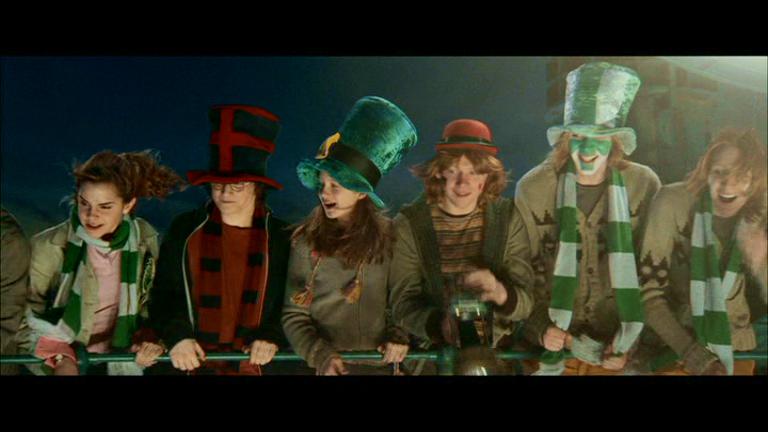The 8 Best Tricksters in Literature
The tradition of playing harmless tricks on friends and neighbors goes back hundreds of years, and has been mentioned in literature as far back as 1392 in Chaucer’s ‘Nun’s Priest’s Tale’. Many famous authors have taken their pranking off the page and into real life, as well. Virginia Woolfe participated in the Dreadnought Hoax of 1910, posing with friends as Abyssinian royals. Even the dour Edgar Allen Poe perpetrated a series of scientific hoaxes in the 1840s, including a fictional balloon trip!
From Shakespeare to Harry Potter, here are eight of the best tricksters in literature.
Viola (Shakespeare’s Twelfth Night)
Shakespeare’s famous comedy of mistaken identities revolves around the shipwrecked Viola, who dresses up as a young man in order to survive on her own. She quickly becomes embroiled in a love triangle, and when her twin brother enters the scene, things become hilariously complicated. Of course, all’s well that ends well, and Shakespeare saves his less than happy endings for tragedies. It may be hard to take inspiration from Twelfth Night unless you happen to have an identical twin handy, but there are still plenty of ways to use mistaken identities as the heart of a joke.

Loki/Low Key Lyesmith (Neil Gaiman’s American Gods)
Gaiman’s tale of mythology and Americana features many versions of old Norse gods, including Low Key Lyesmith, aka Loki. The trickster god of old, Loki has long been associated with pranks and double crosses. In this version, Low Key is a grifter who meets Shadow in prison. The ultimate con-man, his tricks tend more towards running games and schemes rather than straightforward practical jokes. Still, anyone looking for some mythological inspiration for a well-planned prank with a long set up would do worse than to look to Loki.

Peeves (J. K. Rowling’s Harry Potter)
Fans of the books were deeply disappointed that Hogwart’s resident prankster poltergeist didn’t make an appearance in the movies. Peeves is the king of physical practical jokes. A big fan of throwing things around, water balloons, pouring ink over students, writing on chalkboards, and taunting just about everyone in his path. He did have some respect for Dumbledore (and the Bloody Baron), but that was about it. Dealing out his particular brand of humor to everyone equally, Peeves is the inspiration for any slapstick jokers – and a reminder that too many pranks just get annoying after a while.

Tom Sawyer (Mark Twain’s The Adventures of Tom Sawyer)
The young prankster from many of Mark Twain’s books is a smart boy… although he uses his brain to get away with all kinds of things! His most famous trick has to be when he convinced his friends to paint a fence for him – even though whitewashing the fence was supposed to be his punishment. He cleverly convinced them that it was so much fun that his friends were begging to be allowed to do the painting! He often used his cleverness to skip school, once sewing the collar back on his shirt so no one would know he’d spent the afternoon swimming. None of his tricks were mean-spirited, of course. Sawyer would just rather be doing much more exciting things that going to school or painting a fence! The perfect inspiration for foolers who want to take the rest of the day off.

Skeeter (Kathryn Stockett’s The Help)
While not quite on the same level as Minnie’s “terrible awful”, Skeeter does her own share of pranking in Stockett’s novel of 1960’s Jackson, Mississippi. (And let’s face it, that pie goes a few hundred notches beyond a simple prank!) Faced with a moral conundrum over Hilly’s “Home Health Sanitation Initiative”, Skeeter uses her last time as editor of the Junior League newsletter to tell people to drop off their old commodes at the Holbrook house – leading to Hilly’s humiliation when she finds her award-winning lawn covered in old toilets. Skeeter’s prank should serve as inspiration for any looking to blur the lines between prank and protest.

Puck (Shakespeare’s Midsummer Night’s Dream)
Shakespeare’s version of the mischievous, mythological, wood sprite is often considered the definitive version. A jester to Oberon, King of the Fairies, Puck gets up to all kinds of mischief over the course of the play; splitting up lovers, misusing love potions, turning a man’s head into that of an ass… it’s a good thing that everyone involves writes off the strange events as a dream! Many of Puck’s pranks aren’t intentional, and his desire to make amends by the end make him the perfect inspiration for the very well-meaning tricksters who might just be too good at April Fool’s jokes for their own good!

Fred & George Weasley (J. K. Rowling’s Harry Potter)
Ron Weasley’s beloved older brothers, the Weasley twins were such jokers that they ended up leaving Hogwarts early to open up their own joke shop; Weasleys’ Wizard Wheezes in Diagon Alley. As well as selling everything that a witch or wizard might need to play their own pranks, the twins played plenty of their own. From the classic identity swaps (which even mum Molly couldn’t see past!), to their Puking Pastilles to allow students to skip class, to their piece de resistance, exploding out of Hogwarts with a firework dragon, the redheaded twins are always up to something!

Matilda (Roald Dahl’s Matilda)
One of Roald Dahl’s best known (and most loved) characters, Matilda is a little girl with a big brain – and telekinetic powers! The entire book centers around her various pranks, both telekinetic and hands-on. She tricks her neglectful parents into believing that a parrot in the chimney is a ghost, and torments her father’s hair – bleaching it and gluing his hat onto his head. Once she learns of her powers, she uses them in pranks with a purpose – tricking her horrible headmistress into giving up the inheritance she stole and leaving school entirely. If you want to add a moral angle to your pranking this year, look to Matilda for inspiration.





